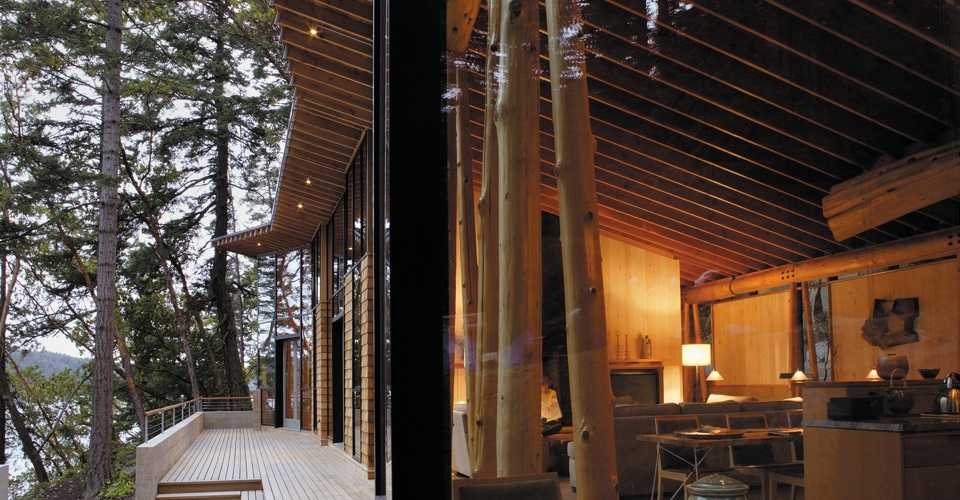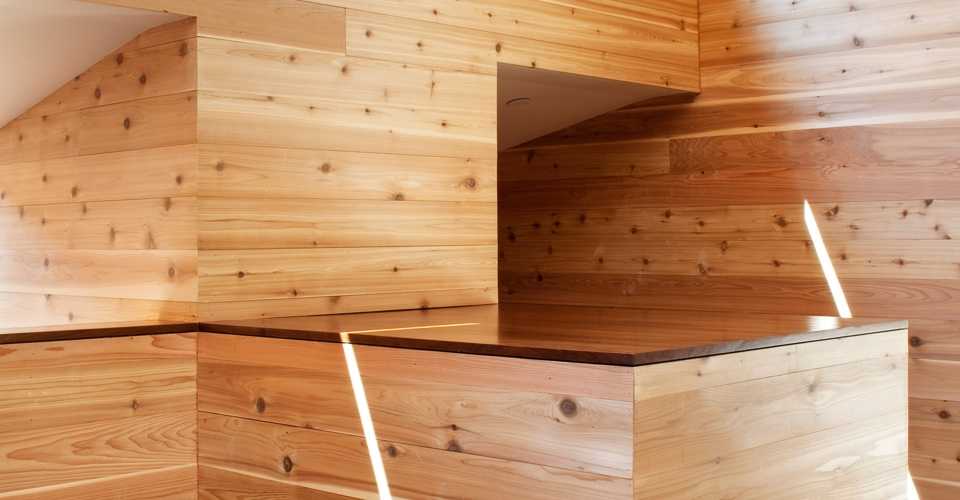Back
Back
Back
Back
Back
Back
Back
Back
Back
Back
USA & Canada
Choosing a Finish for Western Red Cedar Decking

Western Red Cedar is a naturally durable wood ideal for decks, its performance is enhanced when protected by an appropriate finish. Decks are subjected to the most challenging exposure conditions. The combination of a horizontal surface, the abrasive effects of foot traffic, pounding rain and full exposure to sun make deck finishing more demanding than other finishing applications such as siding. It is important to ensure that the finish you apply to your Western Red Cedar decking boards has been specifically formulated for this end use.
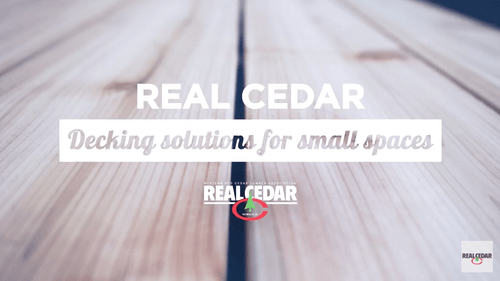
In this section
Table of Contents
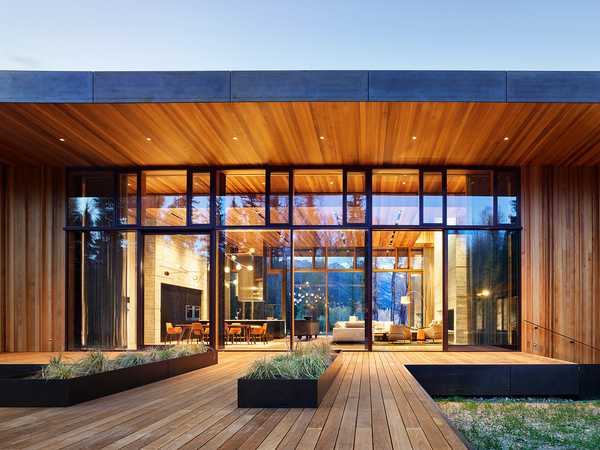
Selecting a Finish
Know Your Options for Finishing Your Western Red Cedar Deck
When it comes to choosing the right finish for your Western Red Cedar deck, you have a number of options. That’s because Western Red Cedar is pitch and resin-free, which means it accepts and holds a wide range of stains beautifully. It’s also a top-performing decking material that’s naturally resistant to rot, decay and insects, which means no matter what finish you decide on, your beautiful deck is going to last a long time.
Of course, for the lowest maintenance option, you can apply nothing and let it weather naturally – all you have to do is keep it free of debris and clean it with a mild oxygen bleach solution.
Cedar’s also an excellent choice for other DIY projects that will enhance your outdoor living space – think pergolas, modern dining tables and built-in seating. So if you’re in full-on renovation mode, you may want to check out our library of how-to videos and free downloadable building plans.
As for your deck finish, ultimately the choice is yours. But to help streamline your decision-making process, cedar experts recommend factoring in the following three considerations:
- Style – What is the Desired Look You’re Going For?
- Climate– What Kind of Weather Will Your Deck Be Exposed to?
- Maintenance – How Much Time Do You Have for Upkeep?
Here, then, is a breakdown of each type of finishing option. If you need application pro tips, see our How to Stain a Deck section or for more detailed information, please download our comprehensive guide: How to Finish Western Red Cedar.
Finishing Product Recommendations
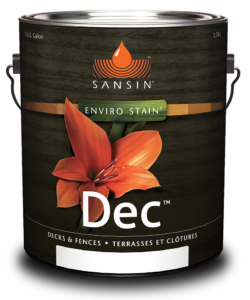 For Western Red Cedar decking, Real Cedar Member Sansin promotes the use of Sansin SDF, a penetrating, one coat finish for cedar siding that offering outstanding weather and UV protection, in a range of natural and transparent colors. Two coats add a richer finish.
For Western Red Cedar decking, Real Cedar Member Sansin promotes the use of Sansin SDF, a penetrating, one coat finish for cedar siding that offering outstanding weather and UV protection, in a range of natural and transparent colors. Two coats add a richer finish.
For your cedar deck, you could also use Sansin Dec, a 2-coat, deep penetrating rugged finish that protects the beauty and character of Cedar and is easy maintainable with just a simple wash and maintenance coat every 2-4 years.
Transparent Stains & Water Repellents
Finishes for Optimal Performance
Although Western Red Cedar is a naturally durable wood and ideal for decks, its performance is enhanced when protected by an appropriate finish. Unlike siding, decks are subjected to the most challenging exposure conditions: foot traffic, pounding rain and in many cases direct sunlight. So it’s important to choose the right finish. For example, film-forming finishes are not recommended for cedar decks.
Transparent Stains & Water Repellents
- Essentially colorless
- Enhance service life of deck
- Reduce shrinkage and swelling
- Quality products should contain UV filters that protect from sun damage (for a year or two)
- Should not be used on top of other products
- Lasts one or two years, depending on exposure conditions
- Quality products should contain mold and mildew inhibitors, which will minimize future growth of mildew and mold
- Solvent-borne, oil based products are preferred, as they are well absorbed by the wood
- Latex formulas have a tendency to form film, which can flake over time
Note: Solvent-borne, oil based products may not be available in all markets
Semi-Transparent Stains
* Lightly tinted and provides color
* Longer service life
* Pigments in tinted stains provide more protection against UV than filters in transparent stains
* Look for solvent-borne, oil-based semi-transparent stains because they penetrate cedar without blistering, peeling or forming a film
Note: The better products contain mildewcides or fungicides.
Non-Finishing
Natural Weathering
Western Red Cedar performs satisfactorily as a decking and siding product if it is left unfinished to weather naturally.
You may choose this option due to:
- A preference for the silvery grey look of naturally weathered Western Red Cedar;
- A desire not to invest the time and effort required to maintain the finish on a cedar product;
- Project inaccessibility, causing difficulty in maintaining the finish on a Western Red Cedar project, for example, siding on very tall buildings; or,
- A concern about the environmental impact of applying a finish on your Western Red Cedar.
These are all valid considerations and the reality is that Western Red Cedar siding and decking can have a long service life without a finish coating in many environments – as long as good design, installation and maintenance practices are followed.
It is important to understand that the choice not to apply a finish to your cedar product has long-term implications. This choice requires advance consideration before you allow natural weathering to begin. As Western Red Cedar weathers, it will lose its natural color and become grey. In very dry climates, it weathers to a silvery grey color, but in most other climates, because of varying moisture and sun exposure conditions, the Western Red Cedar does not weather uniformly and is likely to develop a dark, blotchy, grey appearance.
Should you wish to restore weathered cedar to a state where it can be painted or stained however; significantly more effort will be required to prepare the surface of the wood for coating. If a truly uniform grey appearance is desired, then this effect can be achieved by the use of a commercially prepared bleaching oil or grey weathering stain. This is essentially a water-repellent finish containing pigments and other additives which is most effective on textured cedar. To maintain this look, the bleaching stain may have to be re-applied periodically.
Although the natural weathering effect is usually only “skin deep” (less than 1-2 mm), with the cedar largely unchanged beneath, extra care must be given to the design of the project, the installation of the cedar and routine maintenance. Without the protection provided by a coating against moisture intrusion, (especially end grain sealing), steps must be taken during the installation process to allow Western Red Cedar to readily dry following exposure to moisture, otherwise the risk of decay increases.
All cedar products used in exterior applications require a degree of maintenance to keep them looking their best. Even if the choice is made not to apply a finish to Western Red Cedar, contaminants such as dirt and mildew should be regularly removed to maintain its beautiful, natural appearance.
Life Cycle Assessment (LCA)† of Western Red Cedar siding and decking shows it has the most benign environmental impact of all the alternative product choices for those building applications. Coatings, especially the solvent borne finishes and the frequency of their application negatively impact the LCA of cedar siding and decking. This impact may influence a decision not to apply a finish. Fortunately, a new generation of more environmentally friendly, water borne, coatings are emerging and these products should be considered.
†Life Cycle Assessment (LCA) is used to assess the environmental performance of a product from cradle to grave.
© 2025 All rights reserved
Gatsby Website Development by Jambaree
